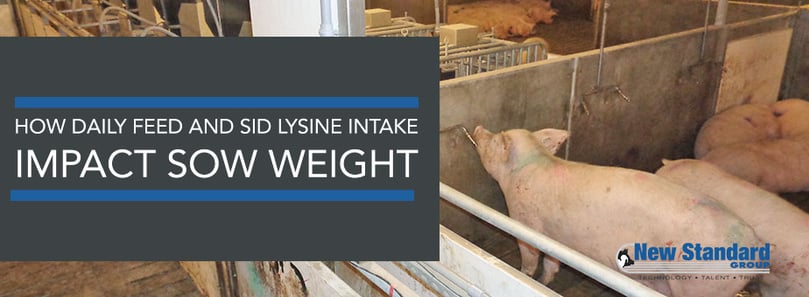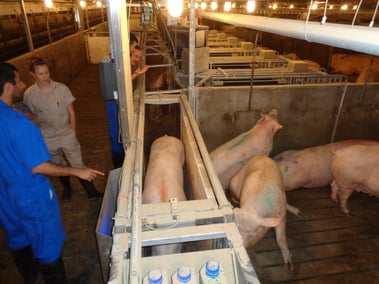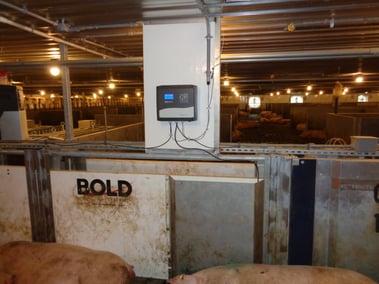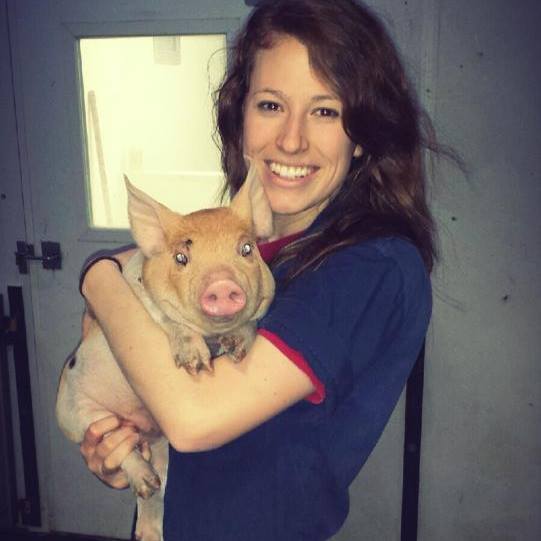
I am a graduate student at Kansas State University studying swine nutrition, and I was given the opportunity to conduct research on a sow farm containing NEDAP electronic sow feeders for group gestation pens. Conducting research involving gestating sows can be a daunting task, however with all of the advancements in technology, specifically the use of ESFs, doors are being opened into areas of gestating sow research that have never been explored before.
Sow Weight and Daily Feed Intake Research
Typically, when we discuss sows, producers are concerned with farrowing rate, total piglets born, or factors impacting sow longevity. Very little attention has been focused on weight gain and feed efficiency in gestating sows. We wanted to understand what sows are doing in gestation. How is sow weight gain impacted by parity? Stage of gestation? What about feed efficiency? Answering these questions will help us determine nutritional requirements and feeding recommendations, allowing for us to really fine-tune gestation feeding programs.
For my MS degree, I collected feed intake and body weight data from 861 gestating sows from a commercial sow farm utilizing ESF technology. The NEDAP system in this barn is unique in that it contains two feeding lines in selected pens. In addition, research pens contained scales in the alleyways that returned to the pens following the feeding stations (these sow weight monitoring systems were designed by New Standard). Therefore, I was able to obtain daily intake and daily body weights on sows, throughout the course of gestation.


Our Findings
Perhaps the largest finding from our research was that sows and gilts did not eat the full amount of feed provided to them or gain much weight in the first 10 days or so in the pen. After the first 10 days, both sows and gilts would consume their full daily allowance of feed. There were significant changes in average daily gain in sows following the initial 10 days in the pen. Following this initial period, average daily gain remained constant, indicating the females were consistently eating and gaining for the remainder of the study. It is important to note that gilts from this farm undergo an extensive training program prior to entry into the ESF system. Our results share a very important message that even with a good training program, gilts and sows appear to struggle within those first few days of introduction into the group gestation pen.
Impact of SID Lysine Intake on Sow Weight Gain and Reproductive Performance
With the excitement and success that was generated from the first trial, I have decided to return to the same sow farm to conduct another study. This time we are utilizing the two feed lines and feeding different levels of lysine (an essential amino acid) to gilts and sows throughout the course of gestation. Our objective is to evaluate the impact of SID lysine intake during gestation on weight gain and reproductive performance of gilts and sows. Daily body weights and intakes will be collected again throughout the course of gestation and individual piglets will also be weighed in the farrowing house.
This type of research would not be possible without NEDAP and New Standard, and we are very excited to have the opportunity to conduct another study. We are eager for the outcome of the trial.





